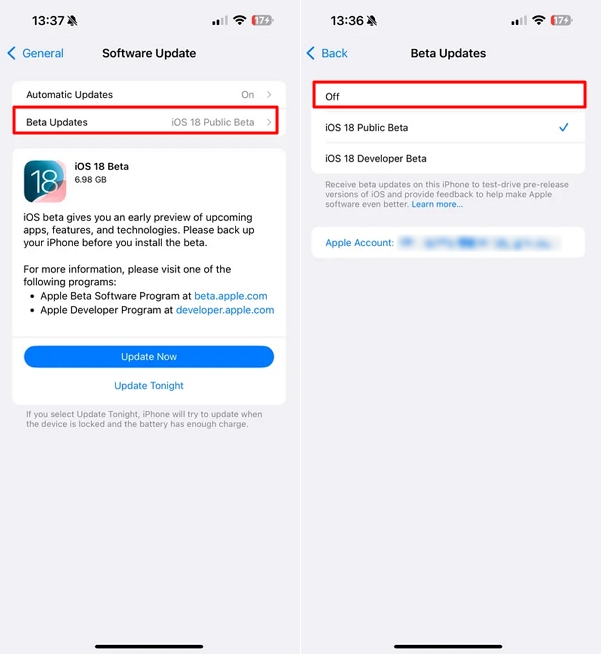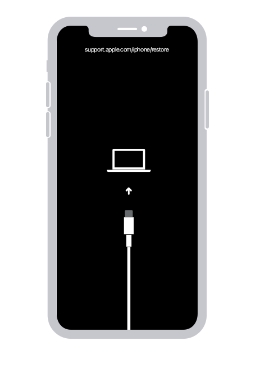Hot Topics
 by Maggie Mueller
Updated On Aug 12, 2024
Published On Aug 12, 2024
Basic iPhone Tips Ideal for Newbies
by Maggie Mueller
Updated On Aug 12, 2024
Published On Aug 12, 2024
Basic iPhone Tips Ideal for Newbies
As with every iOS update, Apple initially releases beta versions for testing before the full public version becomes available. The iOS 18 Developer Beta has been available for download since early June. While it allows you to access new iOS features before the general public, beta versions can be unstable and may cause various issues on your device.
If you've encountered problems and wish to remove or uninstall iOS 18 Beta from your device, this article will guide you through the process.
It is possible to uninstall iOS 18 Beta from your iPhone, but here are some things to keep in mind before proceeding:
All the methods to uninstall iOS 18 Beta without erasing your data will only work if you have an iOS 17 backup created on your computer (using Finder or iTunes) before installing the iOS 18 Beta.
If you don't have an iOS 17 backup on your computer, you'll need to set up your device as new. This is because, according to Apple, iOS backups are not backward compatible with older versions of iOS, meaning you cannot restore iOS 18 backups to your device running iOS 17. While you can still downgrade to iOS 17, you'll have to set up the device from scratch without your data.
However, you can restore your iOS 18 backups to your device once the public iOS 18 version is released and you update your device to that version. This way, you won't lose most of your data when upgrading to the final version of iOS 18.
Even the iOS 18 backups are not compatible with iOS 17, it's crucial to back up all the data on your device before making any major software changes. This precaution ensures that you can recover your data in case something goes wrong during the process, such as bricking your device or experiencing data loss.
It's also important to note that downgrading to an older iOS version may cause some services or apps to become incompatible with the new operating system. To avoid losing your data, create a full backup using iTunes, iCloud, or a reliable third-party backup tool.

You should also turn off Find My iPhone before downgrading your iOS. Disabling this feature disconnects your device from your Apple ID, making it easier to restore a backup if something goes wrong during the proces and preventing your device getting stuck on the Activation Lock screen.

Removing the iOS 18 Beta profile from your device will prevent you from installing future beta versions. Follow these steps:
Once the profile is deleted, your device will no longer receive iOS betas. When the next commercial version of iOS is released, you can install it from Software Update.

If you don't want to wait for the next update, you can uninstall the iOS Beta and downgrade to iOS 17 using a downgrade tool like TinyFix. This tool is designed to reinstall, update, and downgrade the iOS system, ensuring a smooth and seamless process while preventing common iOS errors, like a device getting stuck on the Apple logo.
Here's how to use TinyFix to downgrade your device:
Step 1. Download, install and open TinyFix on your computer and choose the "iOS System Repair" option from the homepage.

Step 2. On the next page, select "Deep Repair Mode."

Step 3. Connect your iOS device to the computer using a USB cable.

Step 4. TinyFix will display the device model and iOS version. Verify the information and click "Download" to proceed.

Step 5. Now, TinyFix will start installing the latest public version of iOS, thereby downgrading from iOS 18 Beta to iOS 17.

Once the process is complete, click "Done" and disconnect your device from the computer.
If you prefer not to use a third-party tool, you can also downgrade from iOS 18 Beta to iOS 17 manually via iTunes or Finder. Here's a step-by-step guide:
Step 1. Use a USB cable to connect your iPhone or iPad to your computer.
Step 2. Open Finder (for Mac) or iTunes (for PC).
Step 3. Put your device in recovery mode by pressing and releasing the volume up button, pressing and releasing the volume down button, and then pressing and holding the side button until the device enters recovery mode. You'll know it's in recovery mode when a "Restore" dialogue pops up on the computer screen.

Step 4. Click "Restore" to proceed.

Step 5. Then, click "Restore and Update" on the next window and iTunes or Finder will install iOS 17 on your device.
Note: All the data and settings on your device will be erased during the restoration.

Step 6. You'll then go through the usual setup process, where you can restore your data from an iOS 17 backup. If you don't have an iOS 17 backup, your device will run a fresh iOS 17 installation without any of your previous data.
Beta versions of iOS often come with software issues that can prevent you from fully enjoying the new features. If you're experiencing too many problems, you can use the methods outlined above to easily uninstall or remove the iOS 18 Beta from your device. You can then either wait for the public version or revert to the more reliable iOS 17. If you have a backup, you can do this without losing your data.
